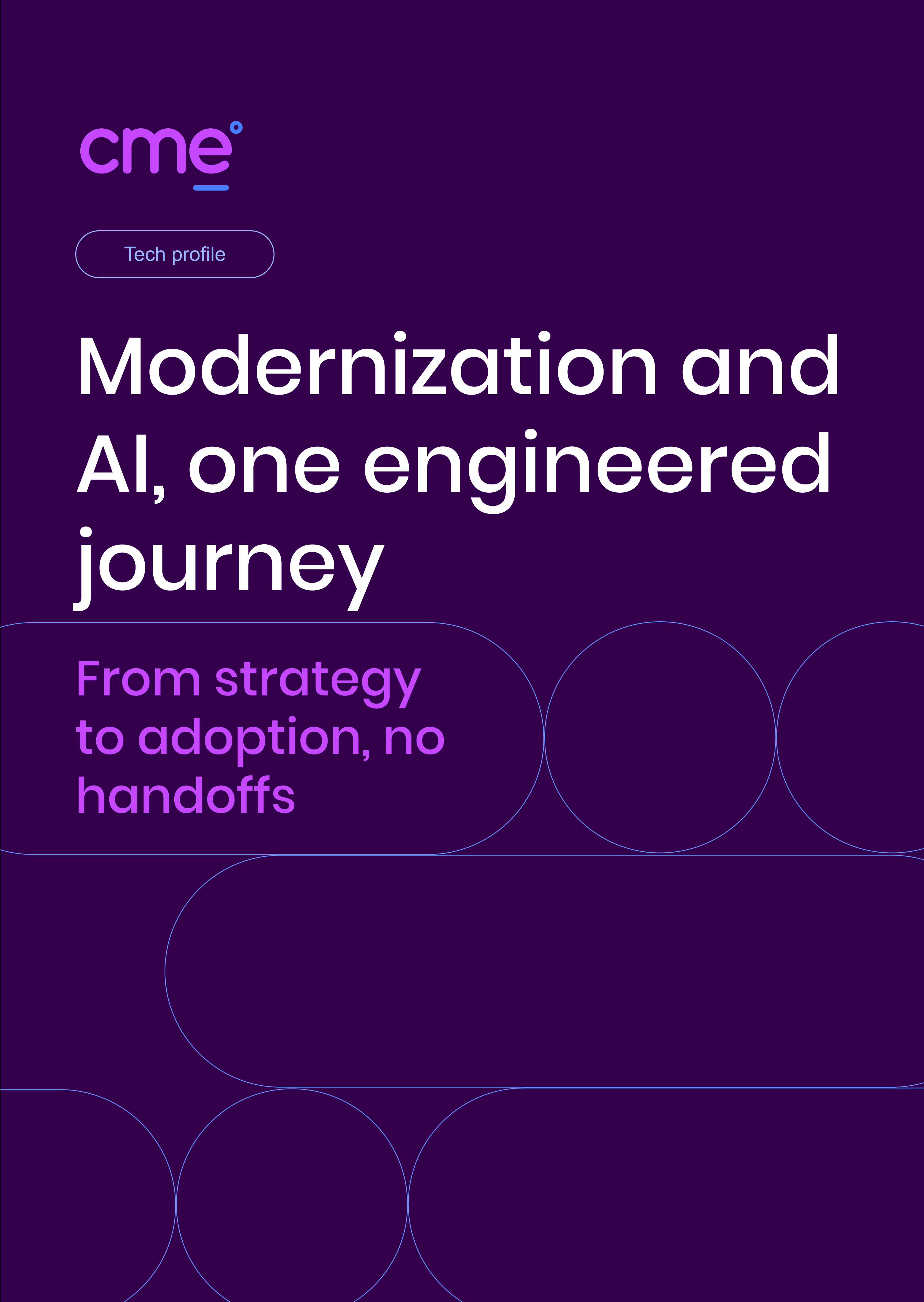AI’s New Rules for CIOs - Insights from Gartner CIO Dubai
AI
AI’s New Rules for CIOs - Insights from Gartner CIO Dubai
At GartnerCIO Dubai 2025, CME joined leaders from Deloitte and Bloomberg to discuss how AI is rewriting IT economics, shifting the CIO’s role from strategy execution to transformation orchestration.
The panel explored six new rules every CIO should apply to turn AI investments into measurable impact.
4-minute read
Watch the full 30-minute discussion before diving into the six new rules.
The key takeaway from the panel is that new rules are changing how technology is delivered, and CIOs must adapt quickly to stay competitive.
1. Start with micro-experiments
AI strategy works best when it’s built on fast, measurable learning. Long-term roadmaps are important, but real progress often happens in short cycles and blindfolded strategies.
- Run small, focused pilots that tackle specific business problems.
- Measure outcomes in real terms. (time saved, accuracy gained, or cost reduced)
- Scale only what works; discard what doesn’t.
- Treat each micro-experiment as data to refine the larger AI roadmap.
This approach reduces risk, accelerates adoption, and keeps AI aligned with business priorities, not just technology trends.
“We’re in an unknown territory driven by an unprecedented AI evolution. It reminds me of the early explorers who had no maps; they actually drew the maps as they went on.” Wissam Youssef – CME
2. Move from build-or-buy to build-customize-integrate
The familiar question of whether to build or buy has become more nuanced.
- Build or customize what defines your competitive advantage.
- Adopt proven platforms for standard functions like HR, finance, or ITSM, but prioritize those with strong AI capabilities.
- Integrate intelligently so data and insights flow across systems.
The CIO’s job is less about owning every line of code and more about orchestrating an adaptive ecosystem that evolves as business needs shift. But that kind of orchestration relies on teams with the skill and agility to keep the ecosystem evolving.
3. Redesign teams for speed and depth
AI is changing the shape of IT teams. The shift is from large, siloed departments to smaller, cross-functional groups with end-to-end accountability.
- Blend architects, data engineers, and domain experts in compact squads.
- Focus on roles that connect business understanding with technical design.
- Build a culture of orchestration, not just execution.
This model delivers faster iteration, better alignment, and stronger outcomes. However, it might fall apart without proper governance.
4. Strengthen governance for machine-made code
AI development tools can now generate and deploy code at a pace humans can’t match. Governance needs to evolve.
- Adopt a “human-above-the-loop” model. Humans define rules, AI executes within them.
- Automate quality checks, testing, and security reviews.
- Use analytics to monitor compliance continuously.
The result is scalable precision without sacrificing control or accountability.
5. Redefine vendor partnerships
CIOs are re-evaluating how they engage with technology partners. The new model is outcome-based collaboration, not time-based billing.
- Link payments to measurable results, not deliverables.
- Define success metrics early with shared ownership.
- Keep flexibility to adjust scope as technology or priorities change.
This structure rewards innovation, transparency, and faster value delivery. But even the strongest partnerships need leaders who can navigate through disruption.
6. Lead through uncertainty
CIOs are operating more like portfolio managers than project owners. They’re balancing risk, value, and timing.
- Focus resources on the problems that matter most to the business.
- Accept that some tools and methods will become obsolete quickly.
- Measure progress through business impact, not just technical milestones.
“Seeking perfection is always a rabbit hole that is hard to get out of. Deliver in smaller, measurable pieces, set yourself in the right direction, and build success gradually.” Abdullah Mahmoud – Deloitte
The bottom line
The panel session made one thing clear: success will depend less on bold transformation plans and more on disciplined iteration, structured experimentation, and clear governance that keeps pace with AI and automation.
More Insights

OUR TECH PROFILE
Here’s a look at how we approach modernization and AI, the capabilities we bring to every project, and proof of impact through client success across industries.




